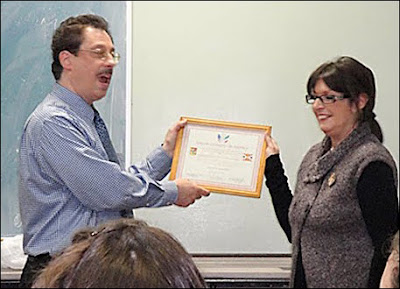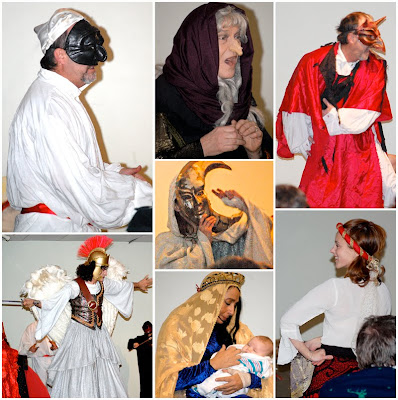 |
| Domenic Giampino (center) posing with his students Photos courtesy of Niccoló Graffio |
 |
| Domenic Giampino awards certificate of completion to student Rose Ann Pusateri-Rowe |
 |
| Domenic Giampino posing with "the flag” |
 |
| Domenic Giampino (center) posing with his students Photos courtesy of Niccoló Graffio |
 |
| Domenic Giampino awards certificate of completion to student Rose Ann Pusateri-Rowe |
 |
| Domenic Giampino posing with "the flag” |
Guest Op-Ed
Submitted by Lucian
I was very interested in Mr. Fidanakis' strategy of Italiote/Siceliote identity, and the idea of preserving the language of Katoitaliotika. Southern autonomy is not just a political or cultural concept but an ethnic one, and language is an important part of it. The suppression of native languages is a hallmark of the cultural leveling that is symptomatic of both Communist and Imperialist ideologies, neither of which are friendly to ethnic identitarians.
 |
| Judge Paolo Borsellino |
“Times of heroism are generally times of terror.” – R. W. Emerson: Heroism, 1841
 It was Chinnici who, together with Paolo Borsellino, Giovanni Falcone, Giuseppe Di Lello and Leonardo Guarnotta, created the Anti-Mafia Pool; a group of prosecuting magistrates who worked closely together sharing information about the activities of the Cosa Nostra. The pool was created to prevent any one person from becoming the sole institutional memory and a sole target.
It was Chinnici who, together with Paolo Borsellino, Giovanni Falcone, Giuseppe Di Lello and Leonardo Guarnotta, created the Anti-Mafia Pool; a group of prosecuting magistrates who worked closely together sharing information about the activities of the Cosa Nostra. The pool was created to prevent any one person from becoming the sole institutional memory and a sole target. Ms. Belloni, an accomplished percussionist and vocalist (mezzo soprano), was accompanied by her usual ensemble of talented musicians and performers. The troupe is a rare and unique example of Southern Italian folk music outside the Mezzogiorno. In addition to this, they put on the most spectacular performances, filled with capricious dance, acting and story telling.
Ms. Belloni, an accomplished percussionist and vocalist (mezzo soprano), was accompanied by her usual ensemble of talented musicians and performers. The troupe is a rare and unique example of Southern Italian folk music outside the Mezzogiorno. In addition to this, they put on the most spectacular performances, filled with capricious dance, acting and story telling. |
| Actors (L-R): Giuseppe De Falco (Razzullo), Max McGrath (La Befana), James Karcher (il Diavolo), Mark Mindek (Archangel Gabriel), Alessandra Belloni (Madonna), Luisa Silvano (Baby Jesus) and Francesca Silvano (Dancer) |
 |
Saint Nicholas in Bari
|

Il Regno is not a formal membership organization. We are a circle of like-minded individuals based in Brooklyn, New York, who volunteer our time and efforts to preserve and promote our Duosiciliano (Southern Italian) heritage, culture and faith. The title of our journal is an allusion to the former Kingdom of the Two Sicilies, which was often simply referred to as il Regno, or the Kingdom. We are Catholic, Monarchist and support the Neobourbon cause. Viva Cristo Re!
Contact: ilregno2s@yahoo.com

